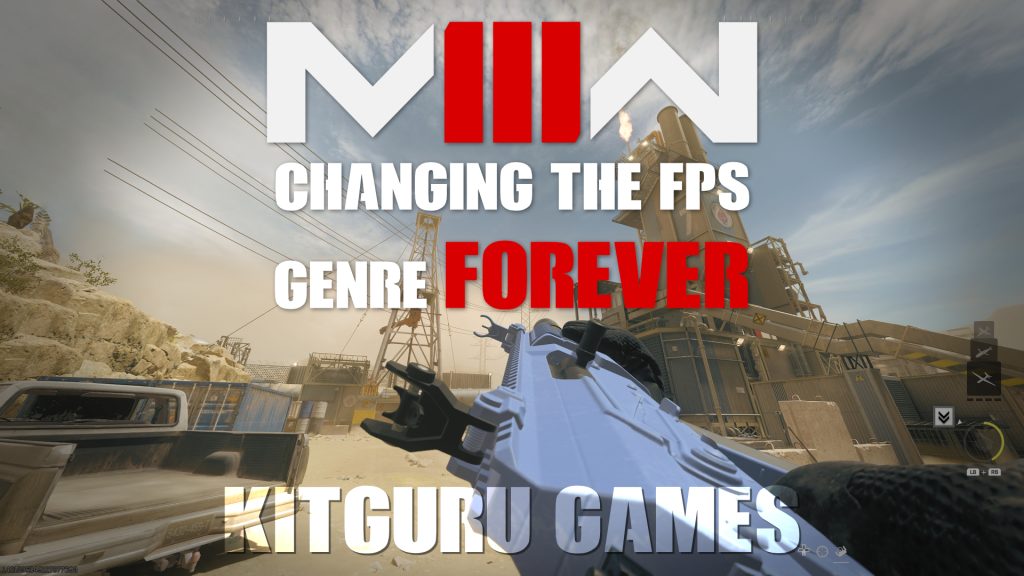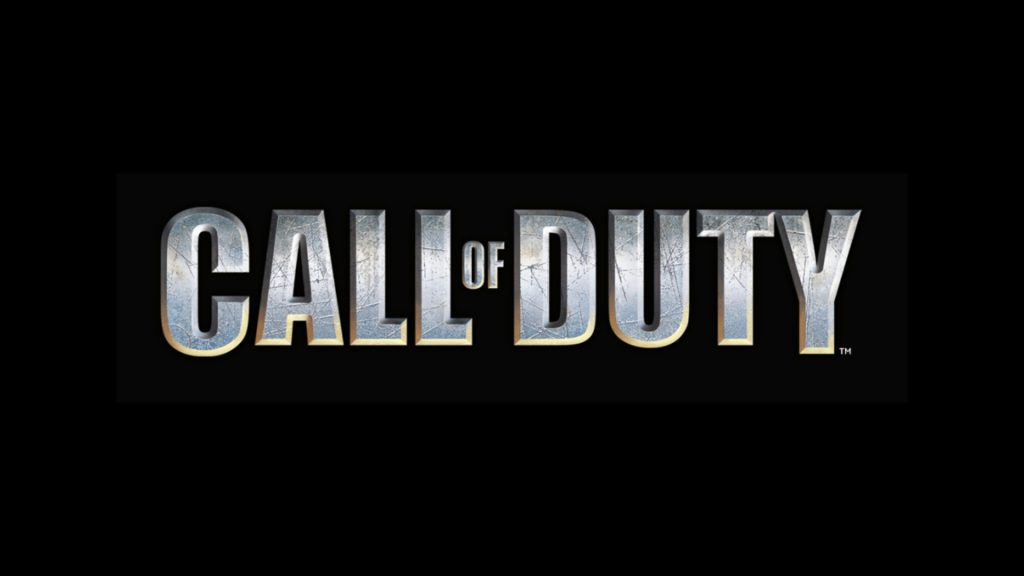Despite what the rumours had suggested, Call of Duty’s annualised train has continued to truck along, recently releasing what was initially intended to be DLC as a full blown ‘premium’ experience in the form of Modern Warfare III. This latest entry has been mocked for its seemingly slapdash campaign, it's uninventive multiplayer suite of remade maps and a Zombies mode which eschews the ‘all-important’ round-based gameplay loop, instead taking the new Warzone map and slapping the barest of coatings of zombified paint on top. With all that said, MW3 has introduced a new gameplay function which may have just changed the first person shooter genre forever – akin to the creation of aiming down sight – the tactical stance.
You may think this to be hyperbole but I genuinely believe that what the folks at Sledgehammer Games have done with the newly introduced ‘tac stance’ could revolutionise the way all future first person shooters are designed. First thing’s first, let's go back a bit.
While Call of Duty may be seen as a stale and overdone series whose industry contributions peaked well over a decade ago, each successive entry has done more than you think to evolve and refine its gameplay – by far the most important element in a multiplayer shooter. Of course, one of COD’s first big moments of impact was the way it popularised aiming down sights. While in no way the first game to do so, 2003’s Call of Duty did have a pivotal role in the universal adoption of this functionality – so much so that it became the industry standard, adding an extra degree of dynamism and choice to any and all combat encounters.
Thanks to the invention of aiming down sights, players now had two different ways to shoot at an enemy – both equally as important and effective in the appropriate circumstances.
Aiming down sights allows you to target the enemy with precision, tightening the spread of bullets and offering a clear point of impact. Of course, in doing so you give up some level of manoeuvrability, preventing the player from sprinting and tightening their field of view – making you more vulnerable should you miss your shots. Additionally, the process of aiming down sights takes some time to activate. While merely a matter of milliseconds, it's these precious moments which can make the difference between life and death.
Alternatively, you could try and hipfire. This helps to maintain your momentum and movement capabilities but at the great cost of accuracy. Depending on your gun of choice and its attachments, hipfire spread means that you are able to shoot much faster, but are less likely to hit the target as precisely, relegating it to being utilised primarily in close quarter situations, or as a panic spray. Furthermore, if you're using a controller, each of these states have differing levels of aim assist, with ADS-ing allowing for a much stickier targeting system. But again, in the time it takes you to aim down sights and fire, the enemy might have sprayed a dozen or so bullets your way using hipfire – and if enough of them hit, well, then you're probably dead.
The introduction of aiming down sights did so much more for the FPS genre than one might first initially assume, especially when it comes to competing online against others. Adding this second branch of gameplay allows for significantly greater tactical opportunities and choices at any given encounter, be it a 1v1, a 2v1 or any other infinite number of combinations. This is why I believe the invention of a 3rd branch of gunplay (aka the tac stance) is so revolutionary.
For the uninitiated, the tactical stance – or tac stance – is a new alternate fire mode which when engaged changes the ADS toggle to a pretty cool looking left-sided stance and instead of bringing up your red dot sight or irons, your crosshairs compress and compact themselves to a much tighter spread while simultaneously offering a greater and more clear field of view when compared to standard ADS-ing (while also affecting aim-assist in its own unique way). Of course, As with the others, the tac stance does not come without compromises.
While significantly more accurate than hipfiring, you do not have that same level of pin-point precision that one could achieve with aiming down the sights. That being said, thanks to the decrease in time it takes to tac stance it can be highly beneficial in a number of scenarios. In fact, when it comes to Call of Duty, many of the engagements you’ll find yourself in are typically just a bit too far away to hipfire, but close enough that unless you’re using a submachine gun with a rapid ADS time, precious moments would be wasted by the time you can accurately fire at the opponent. The tac stance is perfect for these medium range encounters without removing the functionality of both ADS and hipfiring at the same distance.
The inclusion of the tac stance is purely additive and makes for 50% more opportunities and possibilities when engaging in any and all combat scenarios. As with both hipfire and aiming down sights, you can adjust the speed and effectiveness of your tac stance speed and spread using attachments, allowing you greater freedom in the ways you construct your loadout.
Thanks to the tac stance, players now have a great deal more opportunities to use different weapons in more varied scenarios. Worried about running around with an LMG due to just how long it takes to aim down sights? Tac stance can help you maintain viability even at medium or close ranges. Of course, the tac stance isn’t the be-all-end-all of first person shooters – it is simply another vital tool in a player’s arsenal.
Another way to look at the tac stance is to compare it to typical 3rd-person shooting mechanics. Despite staying in first-person, your weapon’s spread, recoil and handling functions much closer to that seen with 3rd-person games. One of the reasons for this is likely due to the fact that Modern Warfare 3 actually fully incorporated a 3rd-person mode into the game.
While it can sometimes be limited by the playlist you’re in, the likes of the Zombies mode allows for you to seamlessly switch between first and 3rd person at will. In doing so, your character now controls and handles like most other 3rd person shooters – just like with tac stance. While the introduction of the tac stance can quite clearly be traced to the newly introduced 3rd person mode, its origins actually stretch just a little bit further back.
2022’s Modern Warfare II brought with it the ‘canted laser sight’ which suspiciously would have your character aim their weapon in a left-leaning manner while using the laser to target enemies instead of your typical iron sights. Used mostly during night maps, the team at Sledgehammer Games clearly realised that the gameplay alterations brought about by the canted laser sight had significantly greater potential than it initially seemed. Using the canted laser sight as a base and combining it with the new 3rd-person mode’s ADS functionality has led to a vital additional ‘tactic’ which one could use whenever they deem fit or necessary.
Call of Duty has always been one of the faster-paced first person shooters, with the run-and-gun nature of the game going as far back as 2003’s Call of Duty 1. Not since that very first title do I believe that COD has introduced a mechanic as impactful as the tac stance. Yes, we have seen some pretty major gameplay additions over the years, from dolphin diving to sliding – and now both. The impact and potential of the tac stance is such that it now serves as a new umbrella mechanic which functions above the other additions. What I mean by this is that the tac stance doesn’t exist in its own little bubble, it works on top of and alongside other mechanics such as sliding – changing the gameplay and timings in a rather drastic manner.
Since the launch of MW3 we have seen more and more players slowly come to the realisation that the tac stance has a genuinely greater number of applications than initially thought. At launch, hardly any players seemed to use it with many even deeming it to be a useless gimmick, but having had an eye on the tac stance since before the game launched, it was one of the first new additions which I experimented with – and unsurprisingly I was crushing it in the multiplayer. As mentioned, medium range encounters saw me dropping enemies before they even had the chance to aim down sight. As more and more players have come to the realisation that the tac stance is much more than a visual difference, the competitive landscape of COD has evolved somewhat. The more people discover the benefits to using tac stance, the more exciting and dynamic encounters become.
As a huge and immediate fan of the tac stance, I hope more and more people come to find its many benefits, ultimately including the functionality in their moment-to-moment gameplay. If the feature finds enough of an audience then we will likely see more FPS games adopt the mechanic. Call of Duty is a trend setter, but unfortunately they also rarely add new underlying mechanics to the formula – and when they do it is normally gone by the next game.
The tactical stance genuinely has the potential to change the way first person shooters are played forever, and so I believe that should the tac stance return for 2024’s COD (or as long as another franchise implements a similar feature) then it could solidify itself as a staple of the genre, I’ll be curious to see whether the industry ends up adopting the tac stance. For my sake – and the sake of the FPS genre – I hope so.
Discuss on our Facebook page HERE.
KitGuru says: What do you think of the tactical stance? Is it as revolutionary as I’m suggesting? Will it become the new standard, or will the tac stance die with MWIII? Let us know your thoughts down below.
 KitGuru KitGuru.net – Tech News | Hardware News | Hardware Reviews | IOS | Mobile | Gaming | Graphics Cards
KitGuru KitGuru.net – Tech News | Hardware News | Hardware Reviews | IOS | Mobile | Gaming | Graphics Cards





Thank you for the auspicious writeup It in fact was a amusement account it Look advanced to far added agreeable from you However how can we communicate
I loved as much as youll receive carried out right here The sketch is tasteful your authored material stylish nonetheless you command get bought an nervousness over that you wish be delivering the following unwell unquestionably come more formerly again since exactly the same nearly a lot often inside case you shield this hike
I was recommended this website by my cousin I am not sure whether this post is written by him as nobody else know such detailed about my difficulty You are wonderful Thanks